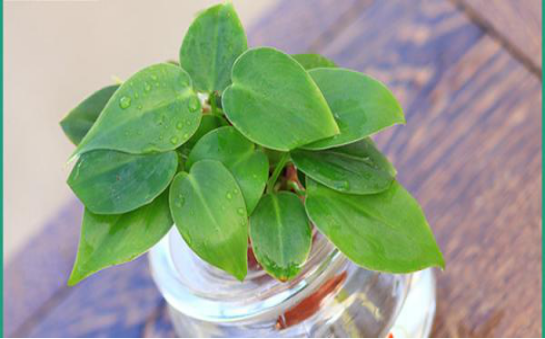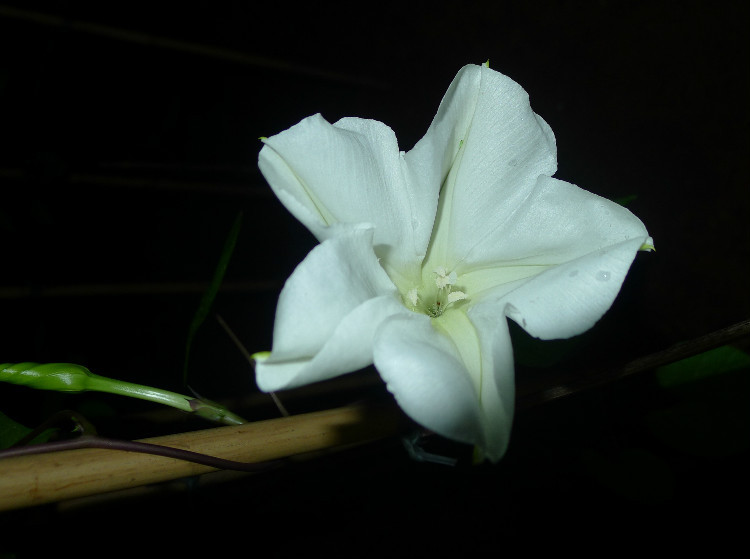Propagation methods of Tripterygium wilfordii
Cutting Propagation of Tripterygium wilfordii
The cutting of Tripterygium wilfordii should be carried out from May to September, cut 2-3 nodes of the sturdy stem, insert it directly into coarse sand or water moss, and keep the substrate moist, while the temperature is kept at about 22-24 ℃, and it can take root about 20-25 days after cutting.
Sowing and propagation of Tripterygium wilfordii
The sowing and propagation of Tripterygium wilfordii was carried out in indoor seedling tray, and the suitable temperature for germination was about 25-30 ℃. It could germinate about 10-15 days after sowing, and then transplant when the seedling height was 5-6 cm.
Ramet Propagation of Tripterygium paniculata
When the plants grow taller, the side branches with aerial roots can be cut directly from the plants or picked out first to promote their long branches, and when the lateral branches grow to about 15-20 cm, the aerial roots can be cut off together for pot cultivation.

The arrangement of the heart leaf vine is very fastidious, in fact, the heart leaf vine can not be put in the study, which is the taboo of fengshui in the study. Because the heart leaf vine itself is a kind of vine, it is negative, so it absorbs all the positive energy in the study, which is easy to cause some unprovoked disputes, and it also makes people's thinking become particularly confused. this will hinder people's career and academic development, so you must not put this plant in the study for your own future. Please also remember.
Don't let the heart leaf vine grow according to the attached wall! Plants like Euphorbia angustifolia are feminine, so if you put it outside and let it wrap around your house or even climb the whole wall, it's a cold house. Over time, health and luck will be inexplicably hindered.
If the heart leaf vine grows some dead branches or some dead leaves, if it is placed in the room at this time, it will make people's luck decline relatively. All things like a vibrant one. If there are withered branches and fallen leaves, it is not very good or beautiful, so when we find that it has this phenomenon, we must cut off those branches and leaves in time.
Propagation methods of Tripterygium wilfordii
Cutting propagation of Tripterygium angustifolia is suitable to be carried out from May to September. Cut 2-3 nodes of the sturdy stem, insert them directly into coarse sand or water moss, and keep the substrate moist, while the temperature is kept at about 22-24 ℃. After cutting, it can take root about 20-25 days.
Sowing and propagation of Tripterygium wilfordii
The sowing and propagation of Tripterygium wilfordii was carried out in indoor seedling tray, and the suitable temperature for germination was about 25-30 ℃. It could germinate about 10-15 days after sowing, and then transplant when the seedling height was 5-6 cm.
Ramet Propagation of Tripterygium paniculata
When the plants grow taller, the side branches with aerial roots can be cut directly from the plants or picked out first to promote their long branches, and when the lateral branches grow to about 15-20 cm, the aerial roots can be cut off together for pot cultivation.
Propagation methods of Tripterygium wilfordii and maintenance and management of the four seasons
The common indoor potted green plant of the heart leaf vine is very similar to the green pineapple in shape, and is often mistaken for green pineapple. The heart leaf vine is not only similar in appearance to the green pineapple, but also its reproduction method is very similar to the green pineapple. Let's take a look at the breeding methods and conservation management of the four seasons.
Propagation method of Tripterygium paniculata
Tripterygium wilfordii is often propagated by cutting, sowing, ramet and tissue culture.
1. Cutting propagation method of Tripterygium wilfordii.
The best time is from May to September. Cut 2 ~ 3 nodes of strong stem and insert them directly into coarse sand or water moss to keep them moist. The temperature is 22 ~ 24 ℃ and take root 20 ~ 25 days after insertion. Sowing and propagation: sow seeds in an indoor seedling tray, the optimum temperature for germination is 25%-30%, germinate 10-15 days after sowing, and wait for the seedling height to be moved to 8 cm. Branch propagation: when the plant grows taller, the side branches with aerial roots can be directly potted or picked first to promote how long the branches are. When the lateral branches are 15-20cm, the aerial roots can be cut off together with the potted plants.
2. the method of tissue culture and propagation of Tripterygium wilfordii.
At present, Tripterygium wilfordii is widely propagated by tissue culture in the United States, Israel, Australia and other countries. Stem tip or axillary bud was used as explant. After routine disinfection, it was inoculated on MS medium supplemented with 4 mg / L 6-benzylaminoadenine and 2 mg / L indole acetic acid, and calli and adventitious buds grew after 6-8 weeks. Then the adventitious buds were transferred to 1/2MS medium supplemented with indole acetic acid 2 mg / L, and the new roots were induced in about 3 to 4 weeks.
Management of Tripterygium wilfordii in four seasons 1. Management in spring
The heart leaf vine is extremely shady, and can grow well in weak light indoors, but it can be watched in the indoor with scattered light all the year round.
In spring, the heart-leaf vine begins to grow, so the soil should be kept moist and fertilized after the new leaves are born. Strengthen the ventilation in the room. Due to the low humidity of indoor air, it can not meet the requirements of air humidity to spray water around it and leaves several times a day.
2. Summer management
Summer is the peak season for the growth of Tripterygium, so attention should be paid to fertilization. Because the leaves of Tripterygium wilfordii are large and many, and the water evaporation is large when the temperature is high, we should timely watering to keep the soil moist, and pay attention to replenish the indoor air humidity and pay attention to indoor ventilation. If the air conditioner is used in the room, be careful not to blow the air conditioner directly on the blade.
3. Autumn management
After the temperature is cool in autumn, the watering times should be reduced to make the basin soil moist and stop fertilizing. After the temperature drops at the end of autumn, pay attention to maintain the indoor temperature, and gradually move the pot to a place with morning and evening light for cultivation.
4. Winter management
Tripterygium wilfordii is not resistant to cold, the winter temperature should be kept above 8 ℃, and the indoor temperature should be kept at about 10 ℃. In winter, proper light is beneficial to the growth of Tripterygium angustifolia, which should be cultured in a place with sufficient light, and the basin soil can be kept dry. Spray water around it several times when the temperature is high at noon. The lowest indoor temperature is kept above 15 ℃. Management can be seen in spring, but no fertilizer is applied. The use of air-conditioning in the room, should be careful not to let the air-conditioning wind blow directly on the leaves, and should often spray water around it to increase air humidity.
- Prev

How to grow impatiens
How to grow impatiens
- Next

The propagation method of Moonflower
Moonflower has two propagation methods: sowing and transplanting. The main method of reproduction is seeding reproduction, this method has a high survival rate and high feasibility, so people have always chosen the method of seed sowing as long as it is to reproduce moonlight flowers.
Related
- Fuxing push coffee new agricultural production and marketing class: lack of small-scale processing plants
- Jujube rice field leisure farm deep ploughing Yilan for five years to create a space for organic food and play
- Nongyu Farm-A trial of organic papaya for brave women with advanced technology
- Four points for attention in the prevention and control of diseases and insect pests of edible fungi
- How to add nutrient solution to Edible Fungi
- Is there any good way to control edible fungus mites?
- Open Inoculation Technology of Edible Fungi
- Is there any clever way to use fertilizer for edible fungus in winter?
- What agents are used to kill the pathogens of edible fungi in the mushroom shed?
- Rapid drying of Edible Fungi

